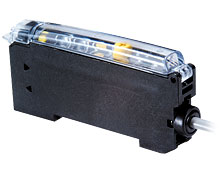Photoelectric Optical Sensors Increase Production Efficiency
In today’s environment, there is unrelenting pressure to manufacture products faster, more precisely, and at a lower cost per unit. As a result, industrial manufacturers increasingly try to find new ways to increase production rates while eliminating any unnecessary costs. In order to meet these needs, factory automation has become and will continue to be a top priority. That’s where photoelectric optical sensors come in.
Photoelectric sensors allow machine designers to measure, monitor and control machine functions quickly and precisely. The high-tech sensors become the eye of the machine, creating specific inputs to control its function. Even more, they are also an innovative way to optimize automation needs, particularly sensing surfacing and distance performance.

Types of Photoelectric Sensors and Applications
A photoelectric sensor is basically an optical device that detects a visible or invisible light beam and responds to a change in received light intensity. The light source is either an LED or laser, depending on the needs of the application.
Photoelectric sensors are available in many sizes, sensing modes and configurations. Furthermore, they provide solutions to nearly any application in industries such as packaging, food processing, semiconductor, and material handling.
LED Sensors
LED sensors are cost-effective and adaptable to virtually any application. As a result, LED sensors are one of the most widely used sensors. Applications these sensors are used for include:
- Sensing objects from opaque to transparent
- Sensing parts in clean to contaminated environments
- Counting parts
- Sensing small parts that are not in a repeatable position
- Identifying parts of varying reflectivity and ignoring backgrounds
- Sensing parts in a defined depth-of-field
Laser Sensors
Laser sensors offer excellent repeat accuracy and performance, especially when using long-sensing range and narrow beams. In addition, these sensors can be used in the same applications as LED sensors, plus they are very effective in high-accuracy measurement requirements.
Fiber Optic Sensors
Fiber Optic sensors offer high performance where the sensing environment is harsh and extremely confined. Applications these sensors are used in include:
- High vibration and shock tolerance
- High heat, wet and corrosive environments
- Compact design for tight sensing locations
- Electrical noise
- Explosion-proof EMI and RFI
- Sensing very small objects
An Inexpensive Investment
Photoelectric sensors are inexpensive and operate well in challenging environments. Also, they perform tasks that other “more conventional” sensors can’t such as color identification, distance, and thickness measurement. Programming these highly sensitive sensors to read a specific and limited area allows you to experience the highest accuracy. In addition, these sensors live long lives due to their ability to handle noise/dust/false signals.
Improving industrial performance is a top objective. High-precision photoelectric sensors help manufacturers optimize productivity while helping their customers improve their products and their processes.
Summary
Investing in the right automation technology can reduce your operating costs. However, identifying the right automation technology, such as photoelectric optical sensors, can be difficult. Ask one of our specialists if a photoelectric sensor is right for you! Just call or email us.
Adapted From 2010 Satellite Newsletter Written By Ron Nordby
